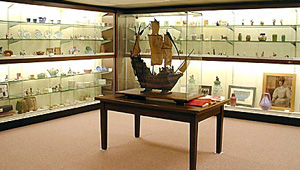Payback Calculations for Investment
Over 50% of grocery sales in the USA are for perishables that are subject to shrinkage, discoloration, photo oxidation, and changes to the food’s taste and microbial content, making the food unsafe or unlikely to sell. This represents over $260 billion in grocery sales annually.
There is clear evidence from independent studies by the US government, FMI, universities, international agencies such as the FAO, and others that lighting has a damaging effect on the quality, safety, and shelf life of all perishable foods.
Radiation from the choice of lighting has been proven to have an effect on product surface temperatures, directly and exponentially accelerating microbial growth and leading to unsafe foods.
In tests conducted by Safe Spectrum Lamps, the return on investment in seafood departments can be a matter of days, while deli departments with packaged and processed meats can show a longer payback.
The choice of lighting has been proven to have an effect on surface temperature and radiation that can directly and exponentially accelerate microbial growth, leading to unsafe foods. The Moneycost of such food borne illnesses in the USA represents between $5 and $6 billion a year (University of Kansas), not including insurance & liability costs and the reputation and good will equity of the supermarkets involved.
The cost to the industry varies from 3% for some categories to 15% in seafood department shrinkage in US supermarkets (FMI, 1987). Even a conservative average of 5% results in over $13 billion in shrinkage in those departments.
Other products such as beer, wines, and glass packaged foods, which appear to be nonperishable, are clearly affected by exposure to lighting.

According to the National Cattlemen’s Association in 2002, “US retailers failed to capture at least $1 billion annually from fresh beef sales due to product discoloration.”
Based on the evidence and published reports, we can estimate the damage caused by lighting to perishables in retail display at over 33% of this shrinkage, which represents over $4 billion a year in the US alone.
Based on the evidence and published reports, we can estimate the damage caused by lighting to perishables in retail display at over 33% of this shrinkage, which represents over $4 billion a year in the US alone. This estimate is a conservative one when we consider that according to the National Cattlemen’s Association in 2002, “US retailers failed to capture at least $1 billion annually from fresh beef sales due to product discoloration.” This estimate does not include other meat products besides beef, nor processed meats, fish, poultry, dairy and all other perishables.
Of the estimated shrinkage costs to US supermarkets of over $4 billion due to lighting, we believe a significant portion can be saved by reducing the radiation of the light sources and by eliminating certain wavelengths of visible and nonvisible radiation that are particularly harmful to food safety and shelf life.
Our guarantee based on this experience is that we can show savings that pay for the change in lighting in less than 90 days in most applications.
The savings shown in tests conducted by Safe Spectrum Lamps can vary from departments such as seafood, where the ROI can be a matter of days, to packaged and processed meats which could show a longer payback. Our guarantee based on this experience is that we can show savings that pay for the change in lighting in less than 90 days in most applications.
In addition to ensuring food safety and extending shelf life, lighting can maximize your merchandising programme by showing fresh products in the best possible and true colors. There is considerable research available (see studies by the Universities of Colorado and Ontario on merchandising) that proves that appearance and fresh colors are the most important factors in consumers’ decisions to purchase meat and other perishables.
Promolux lamps have tested the highest of any lamp tested to date for CPI (Color Preference Index). This translates into spectacular fresh colors for all categories and allows for true color definition. Promolux lamps are used in museums, art displays, and wherever true colors are a must. These same lamps are now available for retailers to show the best merchandising while protecting their foods against excessive radiation.

The value of increased sales and better merchandising can hardly be minimized, when competition for customer loyalty and choice of groceries is primarily based on the quality of fresh foods.
